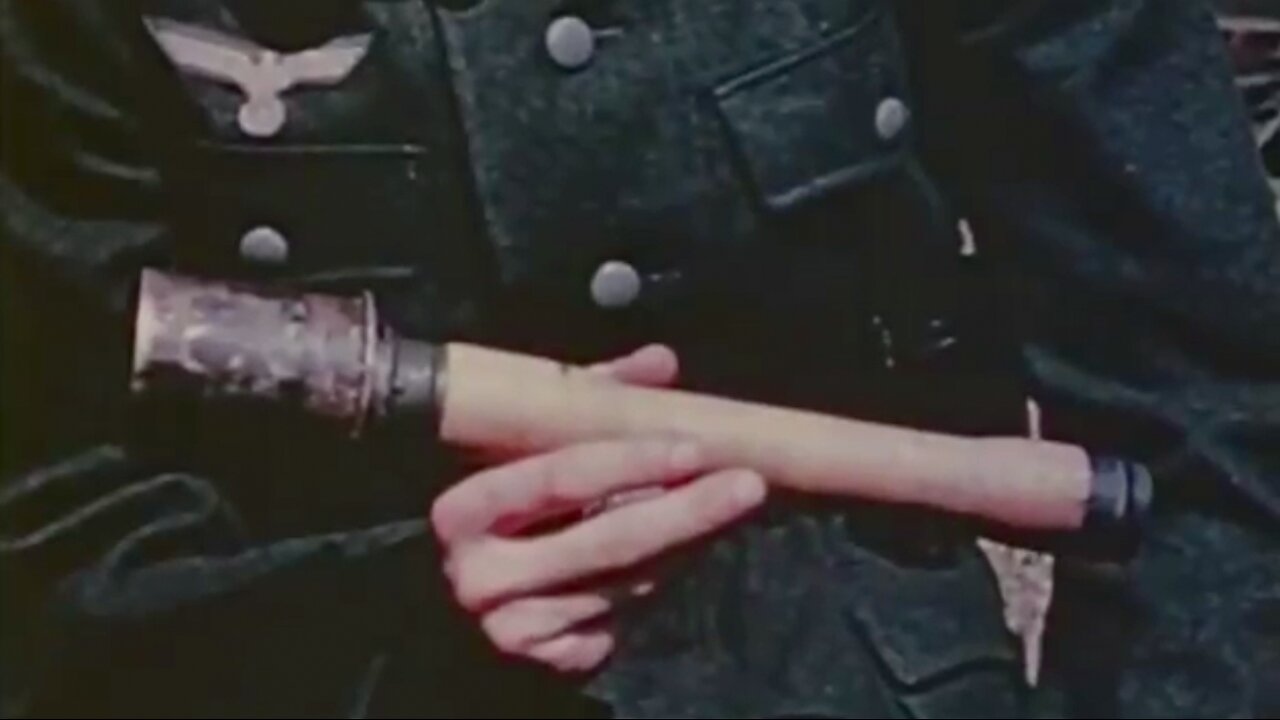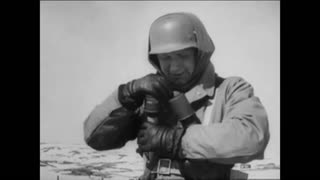Premium Only Content

GERMAN WEAPONS TRAINING in English, 1944 - Mp-40, K98K, Luger P08, Grenade, MG-42 and GrW 34 Mortar
Military1945
Episode № 283
Be sure to give this video a THUMBS UP! Best way to support the channel!
SUBSCRIBE to M1945 on YouTube
https://www.youtube.com/channel/UCN2UQVe6Xaqz5rLFaWq8-mw?sub_confirmation=1
The MP 40
Maschinenpistole 40 is a submachine gun chambered for the 9×19mm Parabellum cartridge. It was developed in Nazi Germany and used extensively by the Axis powers during World War II.
Designed in 1938 by Heinrich Vollmer with inspiration from its predecessor the MP 38, it was heavily used by infantrymen (particularly platoon and squad leaders), and by paratroopers, on the Eastern and Western Fronts as well as armoured fighting vehicle crews. Its advanced and modern features made it a favorite among soldiers and popular in countries from various parts of the world after the war.
The MP 40 was often called the "Schmeisser" by the Allies, after the weapon designer Hugo Schmeisser. Schmeisser had designed the MP 18, which was the first mass-produced submachine gun. He did not, however, have anything to do with the design or development of the MP 40, although he held a patent on the magazine.
K98K
The K98K is a bolt-action rifle chambered for the 7.92×57mm Mauser cartridge. It was adopted on 21 June 1935 as the standard service rifle by the German Wehrmacht. It was one of the final developments in the long line of Mauser military rifles. It remained the primary German service rifle until the end of the war in 1945.
Luger P08
The Luger P08, is a toggle-locked recoil-operated semi-automatic pistol. The Luger was produced in several models and by several nations from 1898 to 1949. The Luger was officially adopted by the Swiss military in 1900, the Imperial German Navy in 1906 and the German Army in 1908. The Luger was the standard service pistol of Switzerland, Portugal, the Netherlands, Brazil, Bolivia, and Bulgaria. It was widely used in other countries as a military service pistol and by police forces.[11] In the German Army service, it was adopted in a slightly modified form as the ''Pistole Modell 1908 (Pistole 08) in caliber 9×19mm Parabellum.
Stick Grenade
Stielhandgranate is the German term for "stick hand grenade" and generally refers to a prominent series of World War I and World War II–era German stick grenade designs, distinguished by their long wooden handles, pull cord arming and cylindrical warheads. The first models were introduced by the Imperial German Army during World War I and the final design was introduced during World War II by the German Wehrmacht.
The distinctive appearance of the Stielhandgranate family has led to them being called "potato mashers" in British Army slang, and they remain one of the most easily recognized infantry weapons of the 20th century.
MG-42
The MG 42 (shortened from German: Maschinengewehr 42, or "machine gun 42") is a German recoil-operated air-cooled general-purpose machine gun used extensively by the Wehrmacht and the Waffen-SS during the second half of World War II. Entering production in 1942, it was intended to supplement and replace the earlier MG 34, which was more expensive and took much longer to produce, but both weapons were produced until the end of World War II.
Designed to use the standard German fully-powered 7.92×57mm Mauser rifle round and to be cheaper and easier to manufacture, the MG 42 proved to be highly reliable and easy to operate. It is most notable for its very high cyclic rate for a gun using full-power service cartridges: it averaged about 1,200 rounds per minute, compared to around 850 for the MG 34, and 450 to 600 for other common machine guns like the M1919 Browning, FM 24/29, or Bren gun. This made it extremely effective in providing suppressive fire. Its unique sound led to it being nicknamed "Hitler's buzzsaw".
8 cm GrW 34
The 8 cm Granatwerfer 34 (8 cm GrW 34) was the standard German infantry mortar throughout World War II.[3] It was noted for its accuracy and rapid rate of fire. conventional design and broke down into three loads (smooth bore barrel, bipod, baseplate) for transport.[3] Attached to the bipod were a traversing handwheel and a cross-leveling handwheel below the elevating mechanism.[5] A panoramic sight was mounted on the traversing mechanism yoke for fine adjustments. A line on the tube could be used for rough laying.
The 8 cm GrW 34/1 was an adaptation for use in self-propelled mountings. A lightened version with a shorter barrel was put into production as the kurzer 8 cm Granatwerfer 42.
The mortar employed conventional 8 cm 3.5 kg shells (high explosive or smoke) with percussion fuzes. The range could be extended by fitting up to three additional powder charges between the shell tailfins.[6]
A total of 74,336,000 rounds of ammunition were produced for the Granatwerfer 34 from September 1939 to March 1945.
-
 8:37
8:37
Military1945
4 months agoVolunteer Norwegian Legion - Narvik - Lebensborn - Finnish Winter War - Josef Terboven - Waffen SS
2021 -
 16:23
16:23
GritsGG
13 hours agoWorld Record Call of Duty Win Streak Attempting!
3.16K1 -
 2:02:54
2:02:54
Side Scrollers Podcast
18 hours agoJOEY SWOLL/HULK HOGAN CONTROVERSY + ONLINE SAFETY ACT + MORE | SIDE SCROLLERS
25.9K2 -
 1:05:44
1:05:44
Omar Elattar
9 months agoThe Digital Real Estate Expert: You're Being Lied To About Making Money Online!
4.61K -
 10:53
10:53
Nikko Ortiz
2 days agoWORST Clips On The Internet
86K27 -
 3:42:38
3:42:38
FreshandFit
13 hours agoREAL R*pe Victim Exposes Shannon Sharpe Accuser As Liar!
70.1K80 -
 2:18:29
2:18:29
Badlands Media
15 hours agoDevolution Power Hour Ep. 376: Optics, Explosions & the War for the Narrative
144K43 -
 37:46
37:46
Stephen Gardner
13 hours ago🔥Trump NEVER expected THIS WIN as Schumer has EPIC MELTDOWN!
44K34 -
 2:02:41
2:02:41
Inverted World Live
9 hours agoNASA Engineer Says Trillions of Shape-Shifting, Cloaked Devices are Hidden on Earth| Ep. 83
39K11 -
 3:12:37
3:12:37
TimcastIRL
9 hours agoGOP Councilman DOUSED IN GAS, Set ON FIRE In Virginia, Suspect In Custody | Timcast IRL
250K92